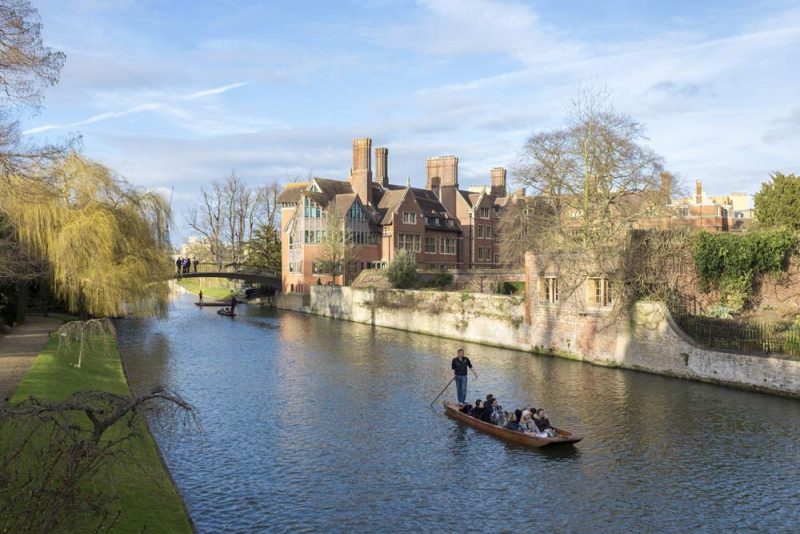
Despite its small size and probably because of the university and its nearness to London and to the rural East of England, there is a lot to Cambridge. Discovering Cambridge takes time.
See the two cities – the city of the university students and the city of the ordinary working man or woman. Listen to the accents, from the well-bred to the East End cockney. See the retired professor. See the visitors – tourists in their hundreds. It is all there.
See the ‘Backs’ – the area behind the colleges that is in the photo at the top of this article. Of course, not all of Cambridge is like that. How could it be? It has its share of poor housing and mean streets. But it also has a lot of very pretty streets and buildings.
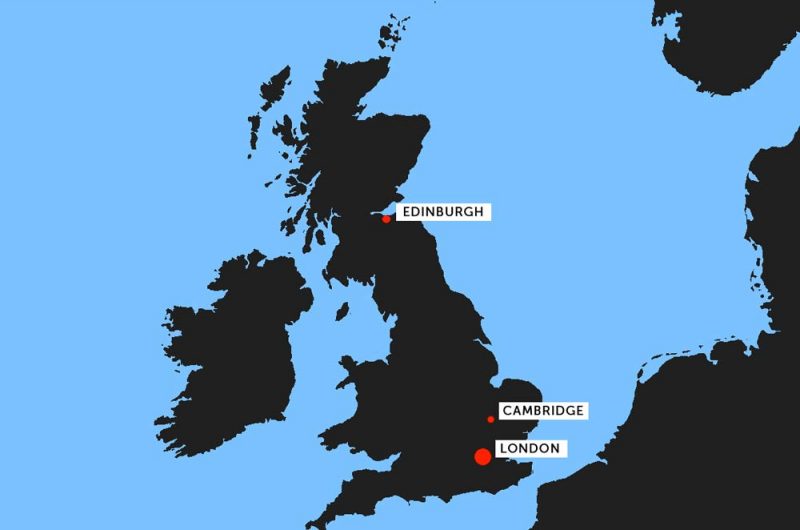
Where Is Cambridge
Cambridge is a city in East Anglia, in the East of England. It is 49 miles from London as the crow flies and 50 minutes by the fastest train to the capital. It is on the southern edge of an area that was once fen until Dutch engineers drained them three hundred years ago.
A lot of the low-lying areas of eastern England, mainly in Lincolnshire, Cambridgeshire, and Norfolk, were once fen – low-lying and marshy area of land. Some were always under water and some flooded seasonally.
Because the water was so shallow, the inner parts of the fens could only be reached by flat-bottomed boats or punts. Its inaccessibility helped its reputation as a mysterious part of old England, cut off from the rest.
Most of the fens are now farmland and meadow, criss-crossed by drainage ditches that lead out eventually to the sea.
You can read here how Scottish Prisoners Helped Drain The Fens.
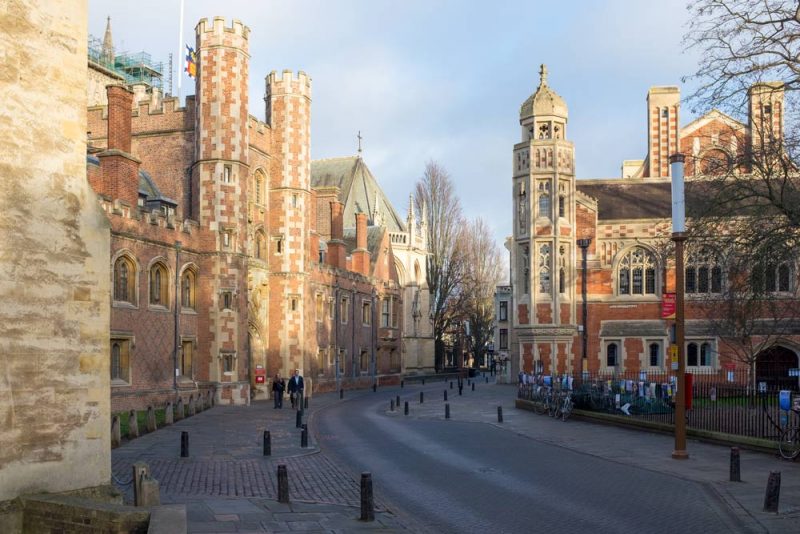
This is one of the prettiest views in Cambridge, on St. John’s Street with St. John’s College on the left. It has the prettiest russet-coloured brick. And it is quite different from the dark buff brick of most of the later buildings in Cambridge.
If you have a sense of the topography of England and of the trees that grow in the uplands and the lowlands, you will sense that Cambridge is low lying. You can tell it from the colour of the landscape and the way buildings have weathered. There is a dampness baked into the fabric of the area that is different from upland Britain.
And indeed Cambridge is low lying – just six metres (20 feet) above sea level.
And it is a small place – 120,000 people with another 18,000 students who come and go. And the buildings are low – no skyscrapers here.
And pretty. There are lots of old, pretty buildings, and the river Cam that wends in a gentle arc around the city.
Who has not heard of punting on the river at Cambridge?
Spot the punt on the river in the first photo here.
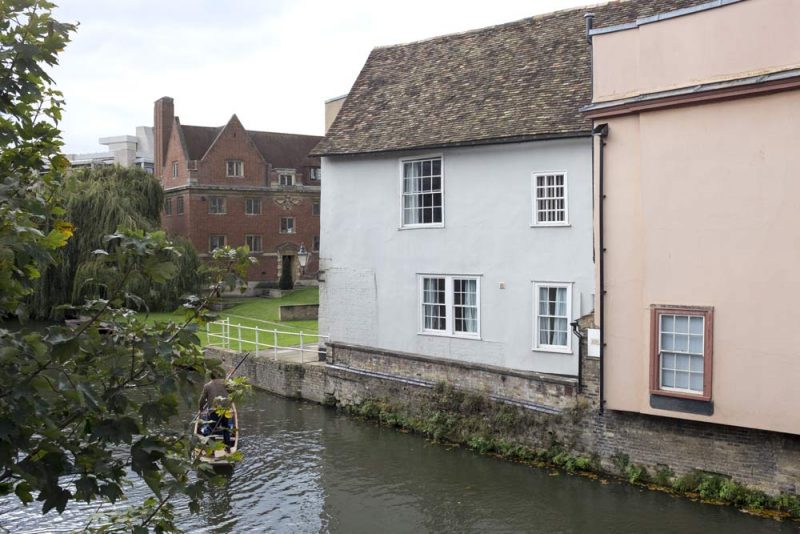
And you cannot miss the traffic jam of punts in high season in this second photo. The stone bridge over the river is The Bridge Of Sighs.
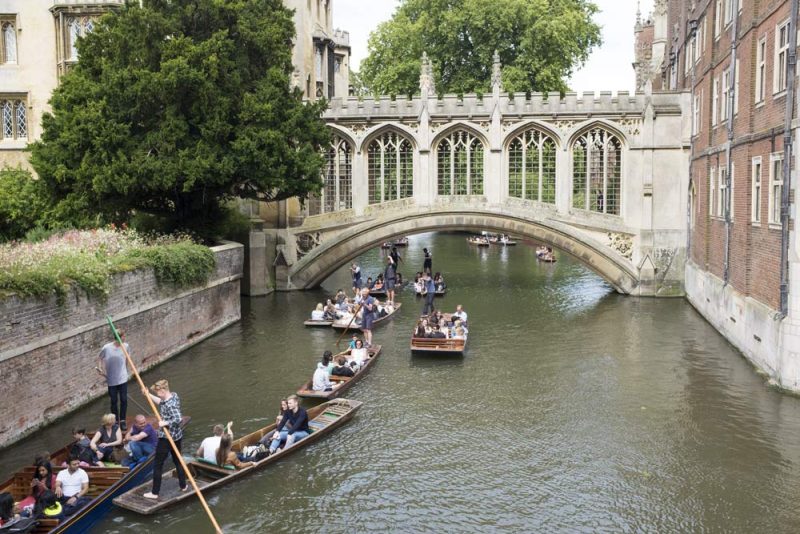
And here is a view from within the Bridge Of Sighs – quite special with the light filtering in through the stonework tracery.
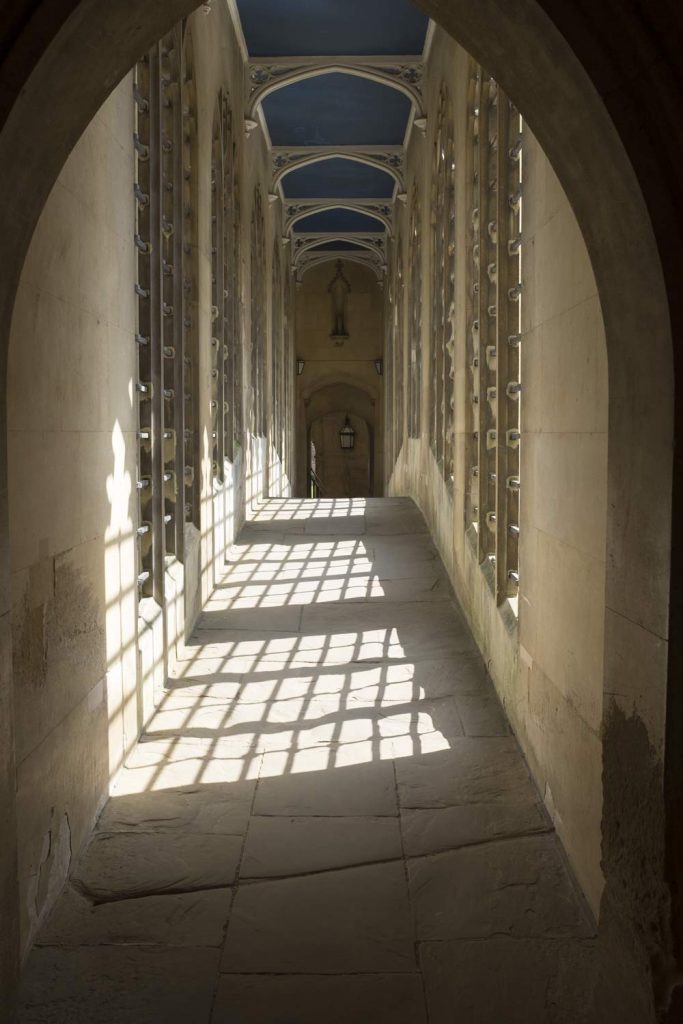
And then there are the colleges – that collection of institutions that make up Cambridge University. The college buildings and the wealth of the colleges has helped Cambridge through times where other places have had their hearts ripped out and replaced with modern glass and steel.
Cambridge University
The university is very important to Cambridge. Without it there would be no biomedical research companies, no computer chip companies, etc. The relationship between the university and business is fundamental to the prosperity of the city.
And it is unusual in that it is in fact the umbrella organisation for 31 separate and autonomous colleges. There are 18,000 students from all over the world who study, each one at a particular college.
You get an inkling of the diversity of the students from the number of languages you can hear on the street. And with students come staff – 11,000 staff.
The colleges have their own rules and procedures (subject to the overarching university regulations), so you hear people talk of being at a particular college rather than being at Cambridge University.
Not all the colleges are ancient. Peterhouse was founded in 1284, Clare College in 1326, Gonville & Caius College in 1348, and Corpus Christi College in 1352. But many colleges were founded in the 1800s and Wolfson College was founded in 1965 and Robinson College in 1979.
City Status
I said it is a city, and you may wonder how it is a city when it is so small. After all, we usually mean places with populations of half a million or more.
What you might not know about the history of England is that a city is any settlement where there is a cathedral.
In the fifteen hundreds, King Henry VIII established the association between cathedral and city. He found cities in six dioceses, which were districts under the pastoral care of a bishop.
England has cathedrals in some relatively small cities. Take Chichester for example. It has a cathedral and it is therefore a city, and yet it has a population of less than 30,000.
But Cambridge does not have a cathedral and it is a city for a different reason. It was granted city status in 1951 by Royal Charter signed by King George VI. The grant was to correct the omission that it was the only ancient seat of learning in the kingdom that was not a city or royal borough. And it was also granted city status to reflect its commercial value to the nation.
Cambridge On The Map
Tamara and I lived in Edinburgh before we came to Cambridge.
That is why I marked it on the map to show how near we are to London now, and how far north we were in Edinburgh (lovely city that it is).
